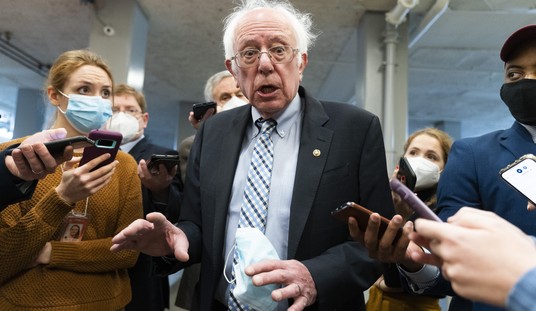=========
=========
Promoted from the diaries by streiff. Promotion does not imply endorsement.
=========
=========
Today, the series takes us to two red states at opposite ends of the country. What makes them interesting is some political intrigue in each state.
Alaska
The big interest here is the gubernatorial race and the future of Alaska’s GOP representation in the Senate. The current Governor is Bill Walker, an independent. In 2014, the incumbent Republican Governor, Steve Parnell, ran for reelection. He was opposed by Byron Mallot on the Democratic side as well as the Republican former mayor of Valdez, Bill Walker running as an independent. The problem was the splitting of the vote with viable candidates Neither Walker nor Mallot had a chance, individually, of beating Parnell so they merged their campaigns, with the blessing of the Democratic Party. Parnell, however, had been vulnerable given his approval rating. Parnell was the successor to former Governor Sarah Palin and even Palin supported the independent ticket of Walker and Mallot as Lt. Governor. The former running mates of both Walker and Mallot withdrew in order to form the new ticket.
The strategy worked in what turned out to be a very close race as Walker/Mallot defeated the ticket of Parnell and Lt. Governor Mead Treadwell. In 2018, a similar situation has occurred except this time there is no fusion of tickets. In this year’s primaries, Mike Dunleavy defeated Mead Treadwell who entered the race at the last minute. On the Democratic side, former US Senator Mark Begich won that primary setting up a three-way race. After some initial polling indicated that such a race would create an easy victory for the Dunleavy and the GOP, there were discussions for either Begich or Walker, who- like Parnell- has low approval ratings, to drop out of the race. The deadline for that option was September 4th and it passed with both Begich and Walker remaining steadfast and both remain in the race. It is possible that either can still officially drop out, but their name will remain on the ballot. However, any votes for anyone who drops out will not be counted by Alaska officials.
Every poll taken since the primaries (and before) indicate a GOP win here. And the Democratic Party and their allies know it. Even the state’s chapter of the AFL-CIO tried to pressure Begich to withdraw from the race. In most polling since, Dunleavy has consistently held the lead with Begich- the Democrat- sometimes polling a distant third. Regardless of how one looks at this dynamic, a clear picture emerges. Unless something seriously happens between now and Election Day, Mike Dunleavy will be the Republican Governor of Alaska come January, 2019.
There is the also the House race that features the long-serving Don Young on the GOP side and Alyse Galvin on the Democratic side- maybe. Democrats won a lawsuit in Alaska that allowed independents to run in party primaries. Galvin officially lists as an independent and on the ballot will appear as an “undeclared candidate nominated by the Democratic Party.” In effect, she gets the backing of the Democrats without the title of being a Democrat. Young is long-serving because he knows how to bring home the pork to Alaska. Galvin has proven a better fundraiser to date. It is a bit unrealistic to believe an upset is in the making, but one observation: among Alaska’s younger voters in the past, they have largely broken not for a Democrat, but for an independent candidate.
As for the future, technically independent, but supposedly Republican Senator Lisa Murkowski has drawn the ire of state Republicans for her refusal to support Supreme Court nominee Brett Kavanaugh. As she proved in 2014, Murkowski does not necessarily need the “R” after her name to be sent back to Washington in 2020. However, she ran in 2014 against a relatively weak Republican and if Alaska Republicans are truly interested in ousting her from their ranks, they should be grooming a potential challenger right now. In short, after the Kavanaugh sh** show, take no prisoners!
West Virginia
In the West Virginia primary, state attorney general Patrick Morrissey pulled off a minor upset by defeating 3rd District Congressman Evan Jenkins. That created an open race in West Virginia’s southern coal region. Morrissey now goes up against supposed Democratic moderate Joe Manchin, the incumbent Senator. The recent Kavanaugh circus and resulting vote created an opportunity for Manchin to show his alleged independent streak. While it is true that he was one of a few Democrats to vote for Gorsuch, the Kavanaugh situation was totally different.
In this writer’s view, any politician with a “D” after their name can never be trusted. It is interesting to note that within about two minutes of Susan Collins (R-ME) announcing her decision to vote for Kavanaugh on the floor of the Senate, Manchin released a statement of support for the nominee. I have no doubts that had Collins decided the other way, the opportunistic Manchin probably had an alternative statement at hand. Except in the case of judicial nominees, Manchin has generally voted the Democratic line. He makes the case he is independent, a “maverick,” and bipartisan and many outlets that track votes may rate him the most moderate of Democrats, but at the end of the day he is nothing but a Democrat. Hence, thanks for the politically expedient vote, but the GOP should NOT let up pressure on him and taking this Senate seat.
As proof, Manchin’s ads have been attacking Morrissey using time-worn attacks that Morrissey and the GOP wish to take away healthcare protections for those with pre-existing conditions. He even recreated his famous shooting commercial from 2010, this time taking aim at efforts to repeal Obamacare protections for those with pre-existing conditions. He has also attacked Morrissey, who as attorney general is sworn to enforce West Virginia laws, for taking action against West Virginia’s teachers when they went out on an illegal strike. Morrissey correctly noted that as attorney general, he cannot pick and choose which laws to enforce even though he may agree with some of the demands of the striking teachers.
In polling, Manchin enjoys an almost certain insurmountable lead (about 8 points in the RCP average). However, leading up to and after the Kavanaugh vote, Morrissey was making inroads. That is because those previous polls failed to acknowledge the large number of undecided voters who are starting to break towards Morrissey as Election Day nears. As other polls have indicated, West Virginia voters would prefer a generic Republican over a generic Democrat. It is only when names are attached does Manchin emerge the leader, most likely the advantage of incumbency.
This race MUST be watched. The Democrats may be counting this one in their column. They already have cancelled two weeks of commercials figuring Manchin has this one in the bag. This writer believes, given recent trends in polling showing that the Kavanaugh circus and the Democratic performance during it, has largely hurt the Democratic Party’s image not only in West Virginia, but elsewhere. At this point, one has to give it to Manchin, but by a more slim margin than originally thought, which necessitates revisiting the race at the end of this series with an update.
That leaves the open 3rd District race where Evan Jenkins vacates after losing the GOP primary to Morrissey for US Senate. However, Jenkins ended up alright and resigned his current seat in the House to assume a seat on the West Virginia supreme court after the state legislature impeached the entire court.
For the GOP, the candidate is Carol Miller and Richard Ojeda for the Democrats, a military veteran. Before we count this as GOP win, there are a few considerations. The 3rd Congressional District is the heart of the state’s coal country. It is heavily white working class and unionized- two constituencies that abandoned the Democratic Party in 2016 for Trump. In 2016, voters here backed Trump 72-23%. In Ojeda’s state senate district, they backed Trump even more: 78-19%. In other words, Ojeda has a winning record on extremely tough turf for Democrats. Furthermore, when you exclude Presidential and Senate races, the 3rd District is more amenable to Democratic candidates down the ballot. Ojeda, although born into a Democratic family, himself voted for Trump in 2016. He has a certain blue-collar appeal and is respected for his military service in Iraq and Afghanistan and, as a high school teacher, establishing an ROTC program there.
This is why both Democratic and Republican-leaning groups and national committees are pouring money into this race. This may very well be a surprise, under-the-radar pick up for the Democrats come Election Day. At this point, this writer is putting it in the GOP column in a closer-than-expected race, but like the Senate race will be revisited at the end of this series.
At the end of this entry, the numbers are as follows:
US Senate 25-23 Republican, US House 57-51 Republican, and Governors 16-8 Republican.
Tomorrow: Indiana













Join the conversation as a VIP Member